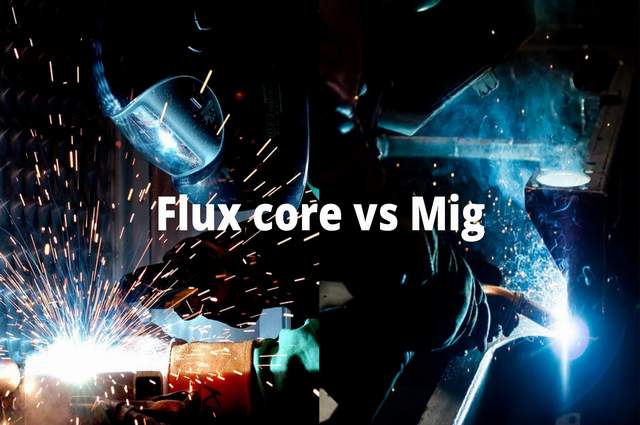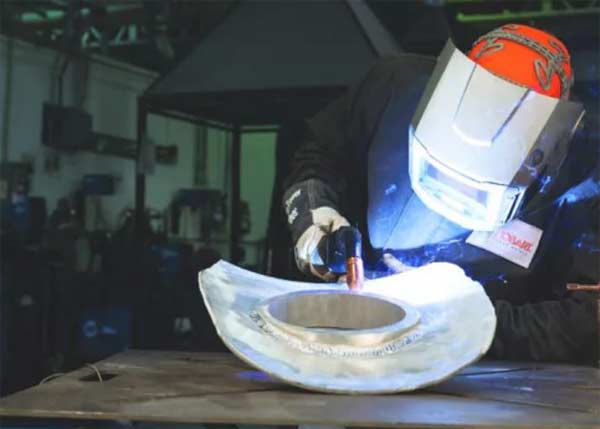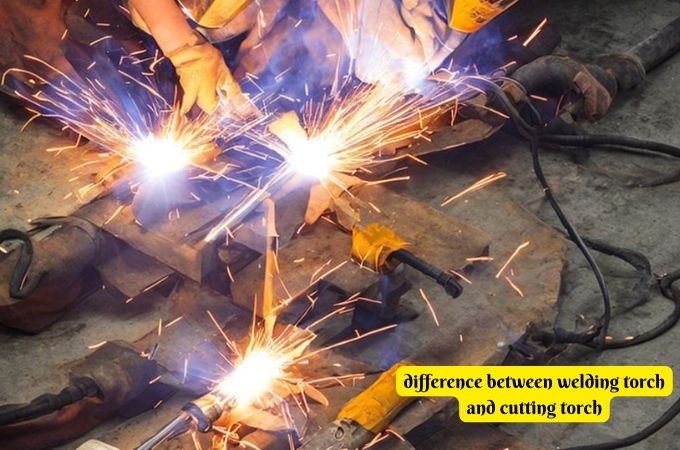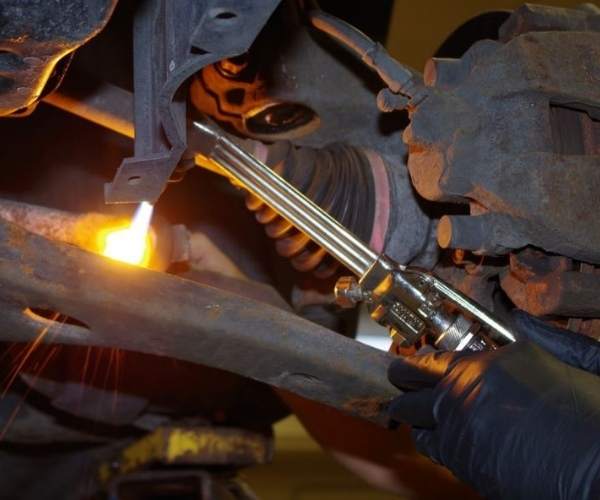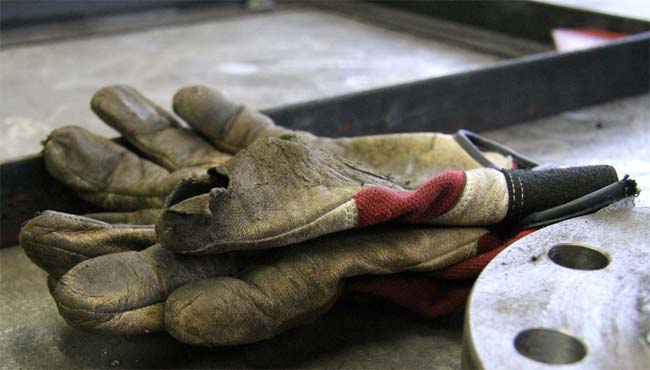Flux core vs Mig – The main Controversy
Regardless of how long time you have been welding, MIG welding and flux core welding are two common phrases that always come first. Among all other methods, these two welding methods are undoubtedly the most common around the world. But when people make battle with Flux core vs Mig, the question arises which one is more powerful or better?
The answer is, each of them is quite similar to other and each of them has its own significant performance, pros and cons according to what you are going to weld. So both of them are good to apply. But there are some notable differences between MIG and flux core. So let’s have a look at their similarities and differences below.
What is Flux core welding?
Flux-Cored Arc Welding was launched in the 1950s. It is not different than other weldings process. It is quite similar to Metal Inert Gas welding.
Flux-cored arc welding is an automated arc welding method. It is very close to the Mig welding process. In the FCAW welding process, a flux-cored electrode is stuffed with flux materials that produce shielded gas to weld. It helps the welding wire weld quicker and protects the air from contaminating the weld. Contrary to Mig welding, you don’t have to carry the externally shielded gas.
Benefits of flux core welding
- Easy to learn compared to other welding methods.
- For any outdoor welding project, flux core welding can be done without any hassle even having a windy atmosphere.
- You can cut down your cost as flux core welding does not need to carry an extra bottle of shielded gas.
- You can weld rusty and dirty materials, unlike MIG welding.
- Flux-cored electrodes are typically used for welding heavy metals for the fastest production.
- Use different positions to weld. You can do your welding in vertical and overhead positions.
Drawbacks of Flux core welding
- Proper ventilation is required because flux core welding produces smoke.
- Accessories are expensive compared to other welding methods.
- Flux core welding is not applicable to all types of materials.
- The welding slag produced must be removed.
What is Mig welding
Mig welding is GMAW, which means Gas Metal Arc Welding. It is older than the flux core. In the MIG welding process, a consumable electrode is connected between the metal and electrode to deliver the arc. During this process, shielded gas and electrodes are passed through the welding gun.
You need extra shielded gas for Mig welding. The electrode used here is different from the flux core as it does not contain any flux material. The gas protects against the contaminants in the welding area.
Benefits of Mig welding
- Quickly produce high-quality welding compared to flux core welding.
- As because no flux is used, the slugs come out from Mig welding much simple to remove.
- Unlike flux core welding, Mig welding can be used in ferrous metals, aluminum, or other types of metals.
- As the shielding gas protects the arc, therefore a little chance of losing alloying elements and minimum spatter, unlike the flux core method.
- Whether you apply semi or fully automatic, both options can be applied in the Mig welding process.
Drawbacks of Mig welding
- You cannot use Mig welding in rusty or dirty materials, so a clean surface is mandatory.
- You cannot perform outdoor welding in any windy places.
- Portability issue because of having external Gas.
- Higher maintenance cost.
Flux core vs Mig – the Similarities & Differences
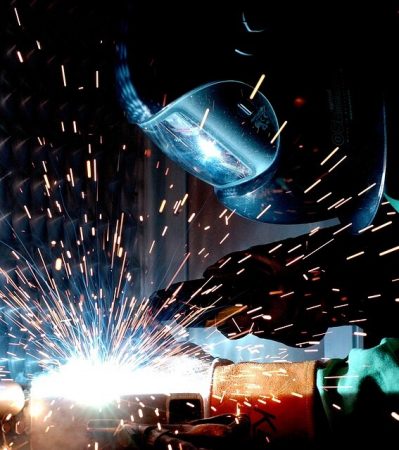
Tools used in Flux and Mig
Generally, these two welding methods use primarily identical welding machines. Machines can be the same but electrodes are different. For the flux core welding process, you can use a Mig machine. The significant difference is, you don’t need an extra container of Gas in case of flux core welding.
Electrode to use
The main important contrast between these two welding processes is the wire or the electrode to use. The MIG welding method uses a solid wire electrode. But on the opposite side, Flux core welding uses a tubular electrode. The flux core electrode is hollow and contains flux elements in the inner side. The outside is made of solid metal.
Using the Shielded Gas – flux core vs mig
Some people like to use the Flux core technique only for its portability. Mig welding requires an extra pressure tank of Gas connected to the regulator. Then you definitely need a hose operating into the MIG welder.
On the other hand, self-shielded flux wire creates protective gas for the weld. The flux contained in the wire melts and produces gas for flux core welding. You may cut the cost because no need for an external gas cylinder.
But, the dual shielded flux core wire needs shielding gas with a regulator and hose. This technique, it is the same process as Mig welding.
In Mig welding, different types of gases are used like argon, carbon dioxide, and a mixture of carbon dioxide with argon. In order to weld stainless steel, a mixture of argon, helium, and carbon dioxide is used for Mig welding.
Welding polarity – mig vs flux core
When you do welding with a self-shielded flux core, you need Direct Current Electrode Negative DCEN settings for the process. That means you need to set the welding wire to the negative terminal.
When you do Mig welding, you need to follow Direct Current Electrode Positive DCEP settings. This means you need to set the Mig gun to the positive terminal. But Mig welders with flux core weld can switch the terminal from one to another.
You must know the exact settings of polarity. Both of the welding processes can be done either with DC or AC. Experts recommend the DC polarity.
Metal Penetration
Some people say that Flux core gives better penetration in metals. But the reality is deep metal penetration depends on some factors.
The first thing is the amperage and Voltage setting that determine the metal penetrations. The next thing is the thickness of the metal determines how deep the welding will be.
As an example, weld a 4.8mm (3/16 inch) steel using 0.030 flux-core wire with a 140v welding machine.
But in the case of solid Mig wire with the same diameter and having the same welding machine, you can weld 3.2mm (⅛ inch) steel.
So it is clear that the flux core allows better metal penetration. You can weld thicker metals with less amperage.
Slag and Spatter Produced in mig & flux core
The result of producing welding slug and spatter differs for both the welding process. Since the flux core contains flux in the middle of the wire, it results in a little slag when welding. The slag covers the weld pool and is displaced after the metal cools.
Slag from impurities is eliminated by flux; so, there is a big possibility of discovering slag when utilizing flux core welding.
Mig welding also produces some slag. The difference is Mig welding slag is easy to clean compared to flux core.
Both of the welding processes create spatter. Spatter is produced when the welding wire transfers spots of molten metal around the welding area.
The spattering amount mainly depends on using of shielded gas. Shielded gas with carbon dioxide creates more spatter in Mig welding. Moreover, the flux core welding process tends to produce more spatter.
Welding Quality of flux core & Mig
Another common controversy is, which welding quality is better. The answer is, it depends on the welding quality and your definition of quality.
If the welding strength is defined as the quality, then both of the welding processes deliver strong welding.
When the appearance is your assessment, then both of the welding techniques especially the Mig welding can produce welding with a good appearance; but the welder must be an expert to give a good look. So there should be no controversy on the issue of the welding quality of both methods.
Comparison of Cost – flux core vs mig
The majority of the opinion says that compared to flux core welding, the Mig welding process is inexpensive. Just because the solid Mig wire is more low-cost than the Flux-cored wire. But the reality is although MIG welding wire is cheaper, the additional equipment required for Mig welding will cost higher.
Starting with a Mig welder, you need to buy a Gas tank along with Gas, a set of equipment that needs to set up the pressure gas cylinder. A hose, regulator, flow meter, etc are additional components that will increase your cost. So, obviously, MIG welder will cost higher than flux core welding.
Metals that can be weld
Ferrous metals like stainless steel, mild steel, copper, and carbon steel can be welded by Flux core arc welding. Mig welding can be done with both ferrous and non-ferrous metals like aluminum, nickel, bronze, zinc, silicon, magnesium, titanium, brass, and other alloys.
Conclusion
So in the comparison of flux core vs Mig, it is clear that both of the welding processes are applicable to different types of metal. Each of them has remarkable performance according to the varieties of metals. So both of them are good performers.
